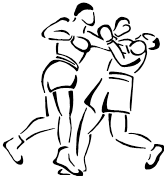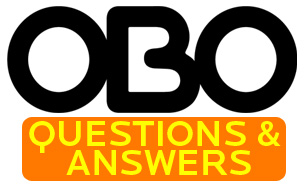As long as it’s ok with the powers that be so to speak, I hope I can make use of this post to work out what plans can be made to further the use of this resource. It’s there and supported, so why not make full use of it? If you have read my profile thingamajig (which gives a little about me and why I write on here), I wrote a book when I was about 16/17, which I had naively hoped to get published, which obviously will take time to rewrite, given that I know it needs a LOT of work to be useful, in retrospect. Ironically time is not something I have much of these days, in spite of having being turned down by some very well known and reputable publishers on the basis of ROI – return on investment.
The book idea (pay me for my time, please?!)
Originally I really wanted to get a series of books published to help the hockey goalkeeping community – not because I want my name printed with something, although admittedly that would be nice, or to be in print, something which I will work towards. Everybody knows that (field) hockey is a sport with not the greatest support base of something like soccer (football where I am!) or American Football, for example, to juxtapose the two! Goalkeepers are often left to themselves and their own devices and teach themselves technique, which may not always be the best way of going about things. I myself did not get goalkeeper specific goalkeeping, until I was on the cusp of breaking into the top league in England (well, sort of!). If someone has recognisable talent, how are they objectively going to improve technically, if they cannot get the right support?
I think it’s ok for me to say that an initial idea when communicating with Obo, was to have me publish a book that can be downloaded for the price of a coffee. Which isn’t much considering I can get a large filter for £1.20 (I know how to shop around and am probably lucky to be able to get such a price for the quality, though not everyone likes filter coffee!), and I happen to drink a lot of coffee these days! Whilst I’m extremely grateful for the support of Simon and the rest of the Obo team in the various ways they have helped me, but it’s difficult for me not to consider attempting reimbursement for my proposal.
As someone trying to break into writing as a means for paying the bills outside of Obo’s great Keepers Resources site, I know full well that a lot of companies can’t afford to pay me an office salary. As much as everyone loves something for free, everything comes at a cost; in this case, time! I think Obo suggested they would be happy to support me going down that avenue, in terms of allowing advertisement, but again, it is not their problem or in their interests to help me write a book when they are a company who sells equipment! The fact they set up the KR site, which is revolutionary and innovative in helping the goalkeeping community at large, considering no other company has bothered to do such a thing. Goalkeepers truly matter with Obo!
Due to the nature of the establish companies feeling they would not get enough sales to get back the return on printing costs, images etc. I have looked into “vanity” or self publishing. I can do such a thing online quite easily, having done my research, but would prefer to know what people think first. Having said that, the passion for hockey and writing means I would happily work for free, it’s just difficult to do so, when time is money and I have very little time as it is. Whilst I want to do everything in life, am finding it’s not possible to fit everything into the limited hours of a day on a regular basis!
My problem lies in the fact that I am not an accredited coach. Whilst I do have a suitably sound hockey CV (subjectively!), I am not Martijn Drijver! My articles seem to have been well received (I’d hope at least) and the sports publishing companies thought the manuscript was well written, even though I know it deserves redoing. I hope my writing ability stands for itself and that my technical analysis is ok, but I am certain a lot of people would dislike my stance on things because of not having accredited references.
Coaching or personal based approach?
The other thing to think about a book approach is how to make it usable. Should it be for goalkeepers who don’t ever get coaching, or should it have a drills-centred approach, other than just technical advice? Kathleen Partridge has produced a brilliant guide but for some people this may be not as helpful, especially if they have no chance of going through drills with a coach who understands what they are talking about! However, if there is no coach and these drills cannot objectively be incorporated into training due to the ignorance of a lot of team coaches. Not taking anything away from Kathleen’s hard and tremendous work though, it must be said, for I don’t wish to offend!
PDF guides?
In trying to rewrite the book, I went about splitting up areas of the game and producing guides in regards to each technical aspect, which are still works in progress. I think if beginners had access to developed theories they may be able to pick things up pretty quickly and advance their understanding in limited time. As a result, I could release these as downloadable PDF documents for use, which Obo have previously agreed to.
Open sourced?
In terms of working through what to write and redrafting these manuscripts, I am looking at open sourcing it to improve the quality for if or when I ever publish them. A lot of writers in a number of fields and genres are tapping into the open source approach and community feedback in order to produce something everyone would be happy to read. Although you can never please everyone! However, one of the obvious downsides of this approach is that you, the reader, would already know what’s been written, considering it would have been already read to make sure it was good enough!
Getting photos is not too difficult (though I have to confess to obviously pinching others’ handiwork from time to time!) as I got myself a shiny SLR a while back and have a fair amount of pictures from high level games to utilise. Additionally, there are sports photographers and goalkeeping enthusiasts like myself, who are happy to help provide suitable visual representations of saves and technique. My drawing skills aren’t brilliant, but I know graphic designers and artists who could help out.
I have also considered a collaborative project but people seem short on time or are not interested. A lot of coaches hold down full time jobs and have responsibilities which come with life, like family, so I understand that. However, I think it would be a good idea if possible and would ensure what I was writing was adequate for helping the goalkeeping community at large.
What’s best?
I would happily still go ahead with a book or guide if there is still interest. Then again, it’s best to know what the community wants. As long as Obo would be happy to support this (not financially of course), then I could go ahead drawing up a timed schedule. Another possibility is releasing a ‘book’ via PDF as they have done in the past. I could learn DTP skills if needs be and have started taking photos to support my articles given the threat of copyright infringement and lack of availability. I have always hoped that other writers would come out of the woodwork and get posting on here. So if you are interested, please get in touch. I may just be of the mindset not to care what people think of me in order to write, as I have experienced in my studies, given that people tend not to contribute to discussion for fear of their opinions being ‘wrong’. I think an open source project involving constant feedback from the community at large, as well as setting up a base of writers, would be a better way of going about things. I’m not interested in writing to get my name printed (otherwise I wouldn’t write under a pseudonym!), I tend to write because I enjoy it and enjoy helping others (although now I doubt I even do that)
Although I feel I can adequately articulate and put into words how to play the role of a goalkeeper, I am fully aware that everybody learns differently. I for one actually learn by being shown how to do something, then doing it myself and learning from my own personal mistakes. So my proposal to put forward is simply based on what people require. Are people actually interested in being taught technique? Or do they want to improve on the more important aspects of the ‘mental game’ and such like (a good goalkeeper is a confident one, always remember that; otherwise you’ll end up second-guessing and failing to perform at your best)?
Anyhow, I thought it would be a good use of the medium of this site to find out what I can offer and obviously to check if people are still interested in me writing, and if so, if they think I’m any good!
Please get in touch!
The idea of this was to make use of the comment function. Please post up what you think could be done to make best use of this site and help Obo give back to the goalkeeping community (as far as I know, they are the only company to facilitate this feature, although there are independent forums out there). So, essentially, please leave a comment (replying to the article) to voice your views (keep the thoughts happy though please!). It would obviously help a lot in regards to knowing what the global community out there would like to get out of this, if at all.

